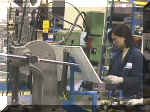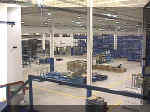








The Move to Fast Ethernet
Computer networks lie at the heart of most organization's internal
operations, supporting workflow automation and office productivity. For
years, 10 Mbps Ethernet has been a mainstay of many networking
infrastructures. The technology's reliable performance, easy setup, and
simple management have proven effective for linking workgroups and LAN segments
along the edge of networks.
Over time, however, far greater demands have been placed on networks.
For users to meet their business objectives today, they need large,
sophisticated applications such as complex databases and multimedia tools to
provide additional capabilities and features. Users also increasingly
require access to bandwidth-intensive services like file server, intranet
servers, and video conferencing.
To meet these demands, many organizations are upgrading their Ethernet links
to greater speeds. The easiest and most commonly used strategy is to
migrate to the 100 Mbps performance of Fast Ethernet. Based on the
Ethernet standard, Fast Ethernet is a proven technology that is compatible with
existing Ethernet LAN environments. Due to its economy, stability, and
compatibility, Fast Ethernet is an ideal solution for boosting the performance
of workgroups and LAN segments.

![]()